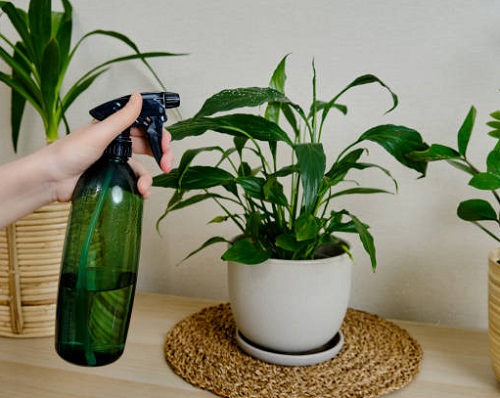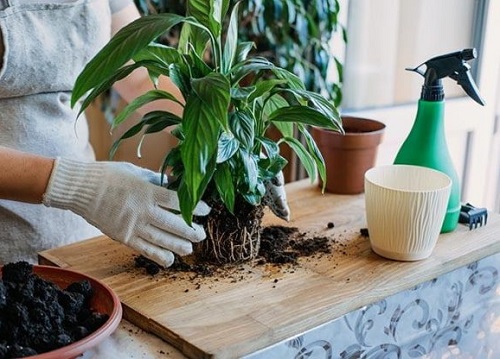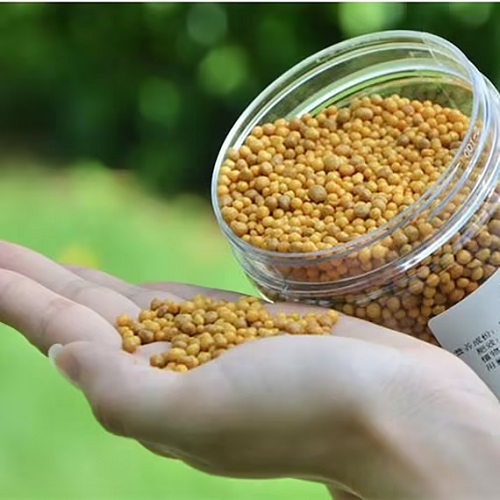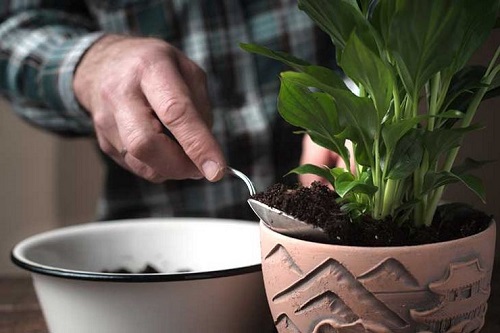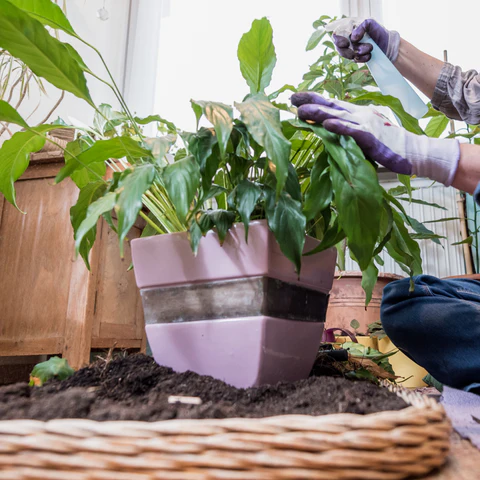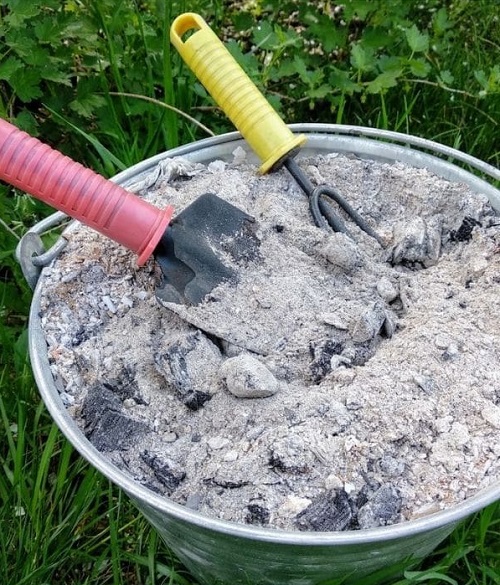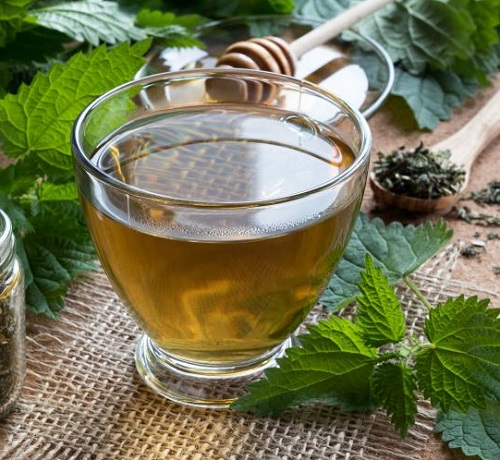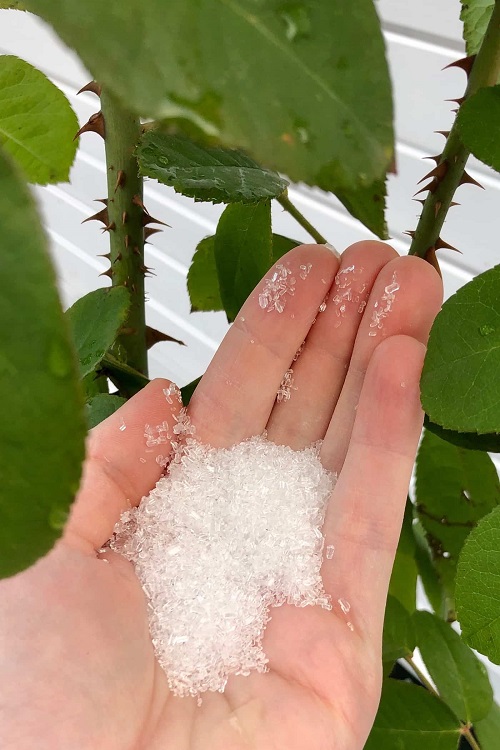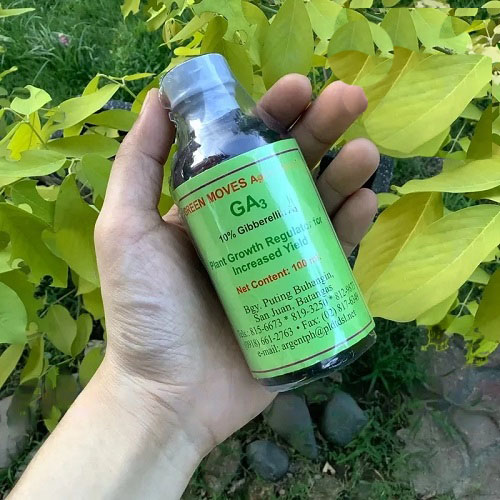Are you looking for some best Peace Lily Fertilizers? Keep on reading to know the secret ones to make the plant achieve a super growth!
Peace lilies (Spathiphyllum) are popular houseplants known for their beautiful white flowers and easy care. Like all plants, they benefit from the right fertilizer applied at the correct time and in the proper amounts. Here’s a guide to some of the best Peace Lily Fertilizers and why each option works!
Have a look at the best peace lily varieties here
Best Peace Lily Fertilizers – Commercial Options
1. Balanced Water-Soluble Fertilizer
Best Options:
- Miracle-Gro Water Soluble All Purpose Plant Food (24-8-16): Widely available and trusted by gardeners, this formula provides balanced nutrition.
- Jack’s Classic All Purpose Water Soluble Plant Food (20-20-20): Known for its consistent results and balanced formula, great for general houseplant care including peace lilies.
- Peter’s Professional All Purpose Plant Food (20-20-20): Offers a blend of essential nutrients and is used by many professional growers.
- Schultz All Purpose Water Soluble Plant Food (10-15-10): Suitable for peace lilies, offering a slightly different ratio that can support blooming.
- Osmocote Liquid Indoor Plant Food (1-1-1): A gentle option suitable for regular feeding of indoor plants like peace lilies.
When to Feed:
How Much to Feed:
- Follow the manufacturer’s instructions, typically 1/2 teaspoon per gallon of water.
Why It Works:
- Balanced formulation provides equal parts Nitrogen, Phosphorus, and Potassium, supporting overall growth, flowering, and root development.
Peace Lily Brown Tips | 10 Reasons and Solutions
2. Liquid Organic Fertilizer
Best Options:
- FoxFarm Big Bloom Liquid Concentrate: Derived from natural sources, it encourages blooming and strong root development.
- Neptune’s Harvest Organic Fish & Seaweed Blend Fertilizer: Offers a mix of macro and micronutrients from fish and seaweed, promoting healthy growth.
- Espoma Organic Indoor Plant Food: Specifically designed for houseplants, providing essential nutrients from natural sources.
- Earth Juice Grow: An organic liquid fertilizer that encourages robust vegetative growth.
- Maxicrop Liquid Seaweed: Derived from seaweed, this product provides a range of nutrients and growth hormones that can benefit peace lilies.
When to Feed:
- Every 4-6 weeks during the growing season.
How Much to Feed:
- Follow the manufacturer’s guidelines, generally diluting to a recommended concentration.
Why It Works:
- Rich in essential nutrients and trace elements, promoting healthy growth and blooming without chemical additives.
3. Slow-Release Granular Fertilizer
Best Options:
- Osmocote Smart-Release Plant Food Flower & Vegetable: This balanced formula (14-14-14) is suitable for peace lilies, providing nutrients for up to four months.
- Miracle-Gro Shake ‘n Feed All Purpose Plant Food: With a balanced ratio of nutrients, this slow-release formula supports general growth and flowering.
- Schultz Slow-Release Plant Food (12-6-6): Designed for indoor and outdoor plants, this product offers a gentle and sustained nutrient release.
- Jobe’s Organics All-Purpose Granular Fertilizer (4-4-4): If you’re looking for an organic option, Jobe’s provides a slow-release formula derived from natural ingredients.
- Espoma Plant-Tone (5-3-3): A versatile organic fertilizer that promotes healthy growth in peace lilies and other houseplants.
When to Feed:
- Apply once at the beginning of the growing season.
How Much to Feed:
- Use according to the package instructions, usually a 1-2 tablespoons mixed into the soil.
Why It Works:
- Gradually releases nutrients over several months, providing a consistent supply without the risk of overfertilizing.
Why is My Peace Lily Drooping, Turning Yellow, Not Flowering and Dying?
4. Specialized Indoor Plant Fertilizer
Best Options:
- Miracle-Gro Indoor Plant Food Spikes: Easy to use, these spikes are designed for indoor plants and provide continuous feeding for up to 2 months.
- Bonide (037321) 108 Liquid Plant Food: A balanced liquid fertilizer specifically formulated for houseplants, including peace lilies.
- Espoma Indoor Liquid Organic Plant Food: Organic and designed for indoor plants, this liquid fertilizer provides gentle nutrition.
- Schultz Indoor Plant Food Concentrate (10-15-10): This water-soluble concentrate is specially made for indoor plants and encourages strong growth and flowering.
- Ferti-lome 10772 Blooming & Rooting Soluble Plant Food (9-58-8): Targeting bloom and root development, it’s suitable for peace lilies and other flowering indoor plants.
When to Feed:
- Every month during the growing season.
How Much to Feed:
- Use as directed on the packaging, typically mixing with water at the recommended ratio.
Why It Works:
- Formulated specifically for indoor plants, including peace lilies, providing balanced nutrition tailored to their needs.
5. Orchid Fertilizer
Best Options:
- Miracle-Gro Water Soluble Orchid Food (30-10-10): Known for promoting vibrant growth and blooms in orchids, it can also be used with peace lilies, but at a reduced strength to avoid over-fertilizing.
- Sun Bulb Better-Gro Orchid Plus (20-14-13): Formulated for orchids but offers a balanced nutrient profile that can be suitable for peace lilies.
- Grow More Premium Orchid Fertilizer (20-10-20): A balanced fertilizer suitable for orchids and potentially for peace lilies as well.
- Espoma Organic Orchid Plant Food (1-3-1): If you prefer an organic option, Espoma’s formulation might suit your peace lily, but be sure to follow application instructions for non-orchid plants.
- MSU Orchid Fertilizer (13-3-15): Used by many orchid growers, it might be suitable for peace lilies due to its balanced nutrient profile.
When to Feed:
- Every 4-6 weeks during the growing season.
How Much to Feed:
- Follow the instructions on the packaging, usually a specific dilution rate with water.
Why It Works:
- Designed for plants that grow in similar conditions to peace lilies, providing nutrients that support flower production and healthy foliage.
Read about How to Fix and Save Overwatered Peace Lily here
Best Peace Lily Fertilizers – Non Commercial Options
6. Worm Castings

Worm castings, often referred to as “black gold,” are a natural and nutrient-rich fertilizer produced by earthworms during their digestion process.
Worm castings are a powerhouse of essential nutrients, including nitrogen, phosphorus, potassium, calcium, and trace minerals. These nutrients are present in a form that’s readily accessible to plants.
- When to Feed: Mix into the soil at planting time or top dress existing plants in the spring.
- How Much to Feed: Add a layer of 1-2 inches on the soil surface or mix into the soil.
- Why It Works: Offers slow-release nutrients, enhancing soil quality, and promoting healthy plant growth.
7. Eggshell Tea

Eggshell tea is a DIY organic fertilizer that utilizes the calcium-rich properties of eggshells to provide nutrients to plants.
- When to Feed: Every 4-6 weeks during the growing season.
- How Much to Feed: One crushed eggshell in a gallon of water, left to steep overnight.
- Why It Works: Provides Calcium, aiding in cell wall structure and preventing blossom end rot.
Read Common Peace Lily Problems and How to Fix Them here
8. Human Urine
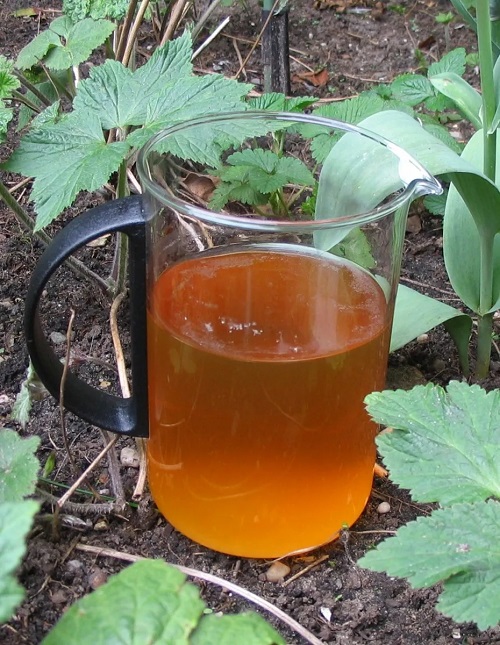
- When to Feed: Every 2-3 months during the growing season.
- How Much to Feed: Dilute urine with water at a ratio of 1:10.
- Why It Works: Rich in Nitrogen, which promotes green leafy growth. Be sure to dilute to avoid potential harm to the plant.
Note: As this method might smell, it is recommended to use it in the outdoor plants.
9. Fireplace Ash
Fireplace ash contains potassium and various trace minerals that can provide essential nutrients to plants. Potassium supports flowering, fruiting, and overall plant health.
- When to Feed: Apply at the beginning of the growing season or mix into the soil when repotting.
- How Much to Feed: Sprinkle a thin layer on the soil surface or mix a handful into the potting soil.
- Why It Works: Contains Potassium and trace minerals but should be used sparingly as it can affect soil pH.
Read Amazing Peace Lily Benefits Proven In Studies here
10. Green Tea
Green tea contains trace nutrients and minerals that can provide a mild source of nutrition to plants, contributing to their overall health.
- When to Feed: Every 4-6 weeks during the growing season.
- How Much to Feed: Brew a weak green tea (cooled) and use in place of a regular watering.
- Why It Works: Provides antioxidants and nutrients that can improve overall plant health.
11. Epsom Salt
Epsom salt is a source of magnesium and sulfur, two essential nutrients that support various plant functions, including photosynthesis, chlorophyll production, and overall growth.
- When to Feed: Once a month during the growing season.
- How Much to Feed: Mix one tablespoon of Epsom salt with one gallon of water.
- Why It Works: Supplies Magnesium and Sulfur, enhancing root development and the plant’s ability to take up nutrients.
Do Peace Lilies Like to be Root Bound?
12. Rice Water
Rice water is a natural and cost-effective way to provide extra nutrients to plants like peace lilies. Here’s how to make rice water and understand its benefits for your plants:
- Prepare Rice: Use plain, uncooked rice. You can use any type of rice, such as white, brown, or even leftover rice.
- Rinse Rice: Start by rinsing the rice with water to remove any excess starch.
- Soak Rice: Place the rinsed rice in a bowl and add water. The water-to-rice ratio can be around 1:4. Allow the rice to soak for about 30 minutes.
- Strain: After soaking, strain the rice, collecting the rice water in a separate container.
- Dilute: To use rice water as a fertilizer, dilute it further with plain water. A common ratio is 1 part rice water to 3 parts water.
- When to Feed: Replace regular watering with rice water once every 4-6 weeks.
- How Much to Feed: Use the water from rinsing or boiling rice, cooled to room temperature.
- Why It Works: Contains essential nutrients leached from the rice, supporting overall plant growth.
Tip: You can also use leftover vegetable or pasta water for the same purpose.
13. Grass Clipping Tea

Grass clipping tea is an organic and sustainable way to provide nutrients to plants like peace lilies. Here’s how to make grass clipping tea and understand its benefits for your plants:
- Collect Grass Clippings: Gather freshly cut grass clippings from your lawn. Make sure the grass has not been treated with pesticides or chemicals.
- Prepare a Container: Find a large container, like a bucket or a garbage can, to brew the grass clipping tea.
- Add Grass Clippings: Fill the container with the grass clippings. You can loosely pack them in, but avoid compacting them too much.
- Add Water: Fill the container with water, completely covering the grass clippings. Use non-chlorinated water if possible, as chlorine can harm beneficial microorganisms.
- Cover and Brew: Cover the container to prevent debris from falling in. Let the grass clippings steep in the water for about 3-5 days. Stir occasionally.
- Strain: After brewing, strain out the grass clippings, collecting the liquid in a separate container. This liquid is your grass clipping tea.
- Dilute: Before using the tea, dilute it with water. A common ratio is 1 part grass clipping tea to 3 parts water.
- When to Feed: Every 4-6 weeks during the growing season.
- How Much to Feed: Steep grass clippings in water for a few days, then use the liquid at a dilution of 1:3 with water.
- Why It Works: Offers Nitrogen and other nutrients, promoting healthy foliage and growth.
Growing Peace Lily in Water Easily
The Secret Weapon of Choice – Gibberellic Acid
Using gibberellic acid as a fertilizer for peace lilies can be a bit unconventional, as gibberellic acid is more commonly used as a plant growth regulator to promote elongation and flowering.
It’s generally not a standard fertilizer, and its application requires careful consideration. Gibberellic acid can stimulate plant growth, but using it in excess or without proper knowledge can have negative effects.
Gibberellic acid is often used to stimulate flowering and elongation in some plants. For peace lilies, it might encourage faster growth and possibly larger leaves, but it might not necessarily result in a healthier or more vibrant plant.
Application:
If you still intend to use gibberellic acid, follow these general guidelines:
- Dilution: Gibberellic acid is usually sold in powdered form. Mix it with water according to the instructions on the packaging. Typically, you would dissolve a small amount (measured in milligrams) in a certain volume of water.
- Dosing: The appropriate dose can vary widely depending on the concentration of the gibberellic acid product and the size of your peace lily. Always start with a lower dose than recommended on the package, especially for peace lilies, which might be sensitive to growth regulators.
- Application Frequency: Gibberellic acid is not meant to be used frequently. It’s usually applied as a one-time treatment or occasionally throughout the growing season. Frequent or excessive use can lead to unwanted effects.
Here are the Best Types of Peace Lily
Caution and Monitoring:
- Peace lilies are sensitive plants, and applying growth regulators or untested substances can result in adverse effects.
- Observe your peace lily carefully after applying gibberellic acid. If you notice any signs of stress, wilting, leaf damage, or other negative reactions, discontinue use immediately.
- Begin with a very low dosage, even lower than what is recommended on the product packaging. Peace lilies are sensitive plants, and using too much gibberellic acid can lead to negative effects.
- Dissolve a very small amount (e.g., a pinch or a fraction of a milligram) in a specific volume of water (e.g., a liter). Exact measurements should be guided by the product’s instructions and the advice of a gardening expert.
- To find the right dosage, consider testing the solution on a small part of the plant before applying it to the entire plant. Monitor the tested area for any adverse reactions before proceeding with a full application.
Correct Way to Fertilize a Peace Lily Plant
The right time and quantity for fertilizing depend on the specific product or method you choose. Here’s a general guideline:
1. When to Feed:
- During the growing season (Spring to early Fall), most peace lilies should be fertilized every 4-8 weeks.
- In winter, reduce or eliminate fertilizing as the plant is less active.
2. How Much to Feed:
- Always follow the instructions on commercial products.
- For non-commercial options, use moderate amounts and observe how the plant responds, adjusting as needed.
3. Avoiding Common Mistakes
- Over-fertilizing: Too much fertilizer can lead to salt build-up and nutrient imbalances.
- Wrong Formulation: Choosing a product that doesn’t suit the peace lily’s needs can lead to deficiencies or toxicities.
4. Monitoring and Adjusting
Regularly check the peace lily for signs of nutrient deficiencies or other problems, and adjust the fertilization approach as needed.
Methods to Fertilize Peace Lilies
When it comes to fertilizing Peace lilies, choosing the right method can significantly impact its growth and health. Two popular approaches cater to different preferences and lifestyles:
1. Regular Fertilizing with Diluted Solution
This method involves more frequent fertilization with a weaker concentration of fertilizer.
- Frequency: Apply every 3-4 weeks.
- Dose: Use half or even a quarter of the recommended dosage stated on the fertilizer packaging.
- Benefits: Regular but mild feedings provide consistent nourishment, minimizing the risk of over-fertilization. This approach promotes steady growth and suits meticulous plant caregivers.
2. Infrequent Fertilizing with Standard Doses
In this approach, you fertilize less often but use the regular recommended amount.
- Frequency: Apply every 6-8 weeks or follow the instructions on the fertilizer packaging.
- Dose: Use the standard quantity specified by the manufacturer.
- Benefits: By adhering to the regular guidelines, this method provides balanced nutrition at intervals that align with the snake plant’s natural growth cycle. It’s perfect for gardeners seeking a more hands-off approach.
Both methods have their benefits, and the right one for you depends on your personal preference and gardening style.
Fertilizing Peace Lilies – FAQs
1. What type of fertilizer is best for peace lilies?
For peace lilies, a balanced, water-soluble fertilizer with a ratio like 20-20-20 or 10-10-10 is ideal. This ensures a steady supply of essential nutrients for overall growth and flowering.
2. How often should I fertilize my peace lily?
During the growing season (spring to early fall), fertilize your peace lily every 4-6 weeks. In winter, when growth slows down, reduce or eliminate fertilization.
3. Can I use regular indoor plant fertilizer for my peace lily?
Yes, you can use regular indoor plant fertilizer with a balanced ratio for your peace lily. However, avoid over-fertilizing, as peace lilies are sensitive to excess nutrients.
4. Should I use liquid or granular fertilizer for my peace lily?
Both liquid and granular fertilizers can work well for peace lilies. Liquid fertilizers provide quick nutrient uptake, while granular fertilizers offer slow-release nutrition. Choose the type that aligns with your care routine.
5. Can I use organic fertilizers for my peace lily?
Yes, organic fertilizers like compost tea, fish emulsion, or seaweed extract can be used for peace lilies. They provide natural nutrients and can enhance soil health. Just ensure they have a balanced nutrient profile suitable for flowering plants.


